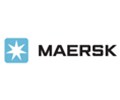US oil, gas rigs jump 10 to 555 on week, as optimistic Q1 season wraps

The US oil and gas rig count jumped 10 on the week to 555, rig data provider Enverus said May 13, as upstream operators wrapped up first-quarter calls on an optimistic note because of higher oil prices and an improving outlook for the rest of the year despite an uneven pandemic recovery.
Two large Texas plays rose five rigs each the week ended May 12, for totals of 241 in the Permian Basin of West Texas/New Mexico and 44 in the Eagle Ford Shale of South Texas.
In addition, rigs in the Oklahoma SCOOP-STACK play added three to a total of 21. Elsewhere, both the Bakken Shale of North Dakota and Montana and the DJ Basin, mostly in Colorado, rose one rig each, to total 17 and 14, respectively.
Bakken rigs are now at their highest level since mid-May 2020; pre-pandemic, rigs in the oil-weighted basin totaled 55.
And, the Haynesville Shale in East Texas/Northwest Louisiana shed two rigs, leaving 51, while the Marcellus Shale, in mostly Pennsylvania, fell by one to 35. Both are largely natural gas-weighted plays.

Total US oil rigs leaped 12 to 429, although rigs chasing natural gas fell by two to 126.
Since the start of the year, the total rig count is up 149, or 37%. In the last eight weeks alone, it has risen 11%.
Q1 calls focused on financials
Q1 upstream calls essentially ended the week of May 10, brimming with operators’ achievements on a variety of financial metrics. These included excess cash returned to shareholders – a key theme of quarterly calls, as were the merger/acquisitions landscape and recommitments to keep 2021 spending at or near maintenance levels.
“Overall, Q1 confirmed the trends in E&P — free cash generation, opportunities, and different approaches on when and how to return [it] to shareholders, and a constructive macro backdrop for limited US supply growth well into the post-[coronavirus] recovery are all the hallmarks,” Evercore ISI Group analyst Stephen Richardson said in a May 9 investor note. “The broader backdrop here is just ‘hold the line’ and let oil price do the work.
“Further, with many [E&P operators] able to buy back around 60% of enterprise value (and the vast majority of market cap) at $60/b+ WTI over the coming five years, we see little need for major strategy shifts,” Richardson added.
E&P companies have maintained 2021 capital budgets across the board in Q1 despite $60/b WTI oil prices and a Q1 free cash flow windfall from a temporary spike in US natural gas realizations, William Janela, an analyst for the investment bank, said.
Moreover, total Q1 free cash flow for Credit Suisse’s E&P coverage came in more than 35% above the bank’s forecasts, Janela said.
“The priority remains demonstrating free cash flow generation and directing that excess cash to boost shareholder payouts and/or balance-sheet repair,” he said.
Large-cap, oil-focused E&Ps spent just 55% of collective Q1 2021 cash flows on organic capital spending, Bernstein research analyst Bob Brackett said in a May 13 investor note.
Uptick in M&A in 2021
On the M&A front, Richardson observed a “notable uptick” in that activity so far this year — one occurred, in fact, just hours before his note when Laredo Petroleum announced a $715 million acquisition of private equity-backed Sabalo Energy.
A day later, Bonanza Creek Energy agreed to merge with Extraction Oil & Gas in a $2.6 billion combination and Appalachian natural gas producer EQT said May 6 it would acquire Alta Resources for $2.9 billion.
“[We] continue to believe consolidation will be a big theme in 2021,” Tudor Pickering Holt said.

Bernstein’s Brackett noted bolt-on acquisitions from private equity-backed upstream operators accounted for more than 75% of upstream value M&A so far in Q2, up from 25% in Q1 and less than 5% in the second half of 2020.
“Clean-up sales of non-core assets … dominated Q1 2021, accounting for more than 55% of total transaction value,” Brackett said.
He called these transactions Phase 2 of consolidation; Phase 1, which kicked off in summer 2020, “was marked by large-cap public deals (90%-plus of transaction value in H2 2020),” he added.
Source: Platts

 Hellenic Shipping News Worldwide Hellenic Shipping News Worldwide, Online Daily Newspaper on Hellenic and International Shipping
Hellenic Shipping News Worldwide Hellenic Shipping News Worldwide, Online Daily Newspaper on Hellenic and International Shipping





















 PG-Software
PG-Software